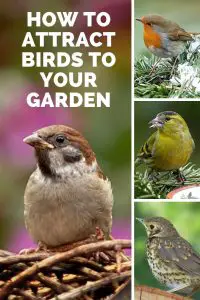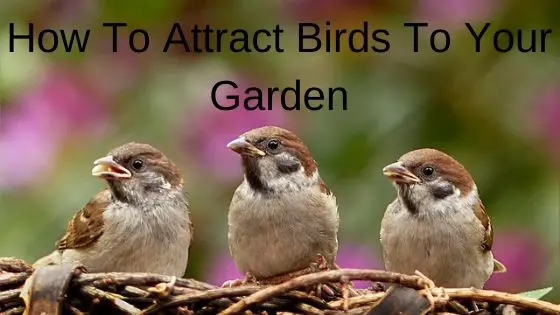Wherever you live, a large city, or a isolated rural property, you will already be getting some birds to your garden. To attract different birds to your garden you have to grow plants that they prefer. So lets have a look at how to attract birds to your garden.
How To Attract Birds To Your Garden
Why do birds come to your garden? Only you can answer this question, it might be for food, shelter, or another reason. Whatever the reason, you can attract many more birds by following the tips in this post.
It’s not only birds that can be attracted to your garden, to find out the flowers that attract bees follow this link.
Food For Thought
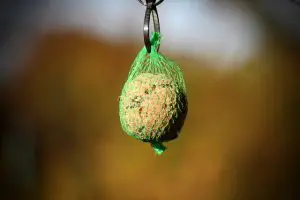
Birds are always on the hunt for food and this should be your first task. Hang a few bird feeders with nuts, seeds, or fat balls around the garden to attract the birds. Only ever use certified bird feed seeds and nuts as these will give the birds the required nutrients necessary for their survival.
Plants For Bird Food
There are many plants that birds can feed from. The berries or seeds will provide all their dietry requirements and keep them healthy. Plants like:-
Holly
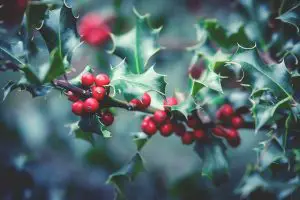
Easily recognisable by it’s sharp, pointy leaves and bright red berries holly provides a wealth of food for birds. In Spring and Summer holly attracts insects which are food for Robins and Wrens. In Autumn the berries attract Thrushes, Redwings, Fieldfares, and Blackbirds.
Ivy
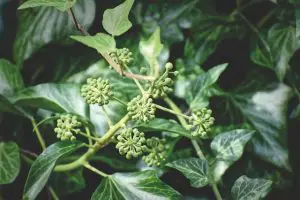
One of the easiest plants to grow, ivy produces black berries that usually ripen during Winter. Starlings, Blackbirds, Jays, Thrushes, and Waxwings all feed on the ivy berries. While Robins and Wrens feed on the insects that are attracted to the ivy flowers in Spring.
Honeysuckle
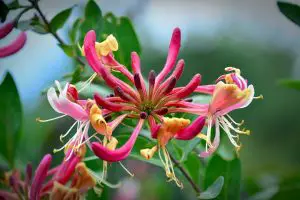
The fragrant honeysuckle flowers attract many insects that become food for many varieties of birds during Spring and Summer. In Autumn the ripe berries attract Warblers, Bullfinches, and Thrushes.
Hawthorn
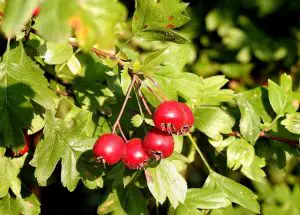
Hawthorn leaves are the main food source for the caterpillars of many types of moth which in turn, become food for many young birds in Spring and Summer. The berries or “haws” are food to many birds including Greenfinches, Chaffinches, Starlings, Fieldfares, Redwings, and Blackbirds.
Cotoneaster
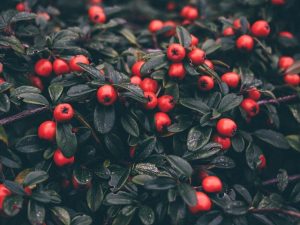
Waxwings, Thrushes, and Blackbirds flock to this popular garden shrub and strip all of its berries in early Autumn.
Rowan
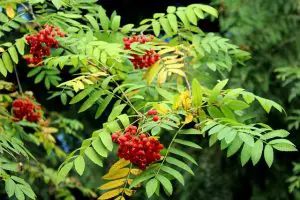
There are many types of rowan and depending on which type you grow, you will have berries from the end of July, up until the end of November. Starlings and Blackbirds benefit from the nutrients contained in rowan berries.
Crab Apples
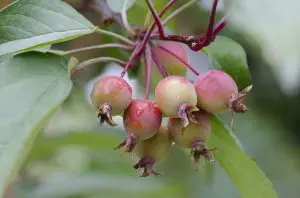
Crab apple trees produce many flowers which attract many insects that many birds will feed on. The fruit from the crab apple, although inedible to us is welcomed by Blackbirds and Starlings.
Guelder Rose
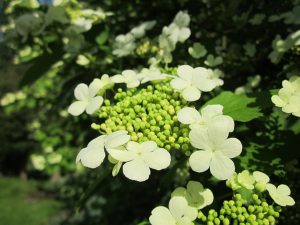
Technically not a rose, this member of the viburnum family produces large clusters of berries from late October right up until mid March. Mistlethrushes and Finches, particularly Bullfinches are attracted to guelder rose berries.
Roses
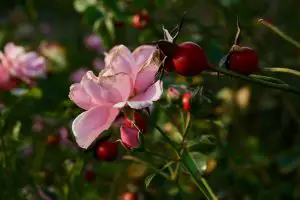
Particularly hedging roses including Rosa Rugosa and dog roses produce many “hips” that remain on the plants until late into the Winter months. Fieldfares, Mistlethrushes, and Blackbirds are attracted to these rosehips.
Teasels
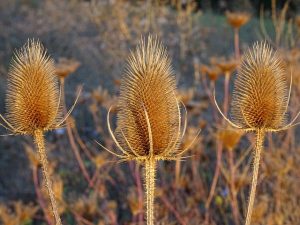
The tall, striking seedhead of the teasel is a useful food source for Buntings, Goldfinches, and Sparrows. They remain on the plant from early Autumn through to December.
Sunflowers
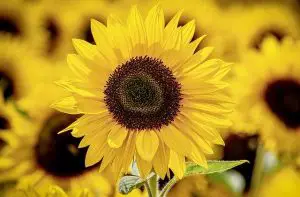
To attract Nuthatches, Long-tailed Tits, Finches and many other seed eating birds to your garden allow the sunflower heads to develop seeds. The seeds from the sunflowers provide a rich food source through late Summer and into late Autumn.
Pyracantha
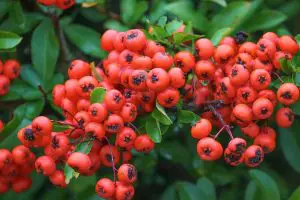
Commonly known as the firethorn, pyracantha produces berries varying in colour from dark yellow to deep red depending on the variety. The berries are not particularly popular with birds and will only be eaten when all other food sources are exhausted. This means they will remain in berry for much longer than other plants until the Blackbirds and Thrushes find them.
Berberis
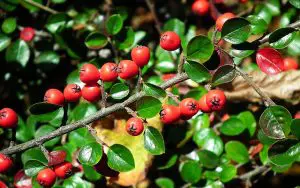
Sadly this plant is not that popular with gardeners and yet from an ornithological view point it’s a great plant. The many flowers attract many insects that birds can feast on and the berries provide plenty of nutrients for hungry birds in Winter.
A Safe Haven
When attracting birds to your garden, you should take into consideration that birds become food for other species. To prevent birds being prey to cats, foxes, other birds and more, you need to provide some form of shelter for the birds.
Now I’m not talking about building bird houses although that would be good to get birds breeding in your garden. I’m talking about growing plants that birds can hide out in, and build their nests in.
Plants For Shelter
If you’re providing plants for birdfood you are probably providing shelter plants too. Let’s look into it in more detail because it’s a big part of attracting birds to your garden.
Ivy As Shelter
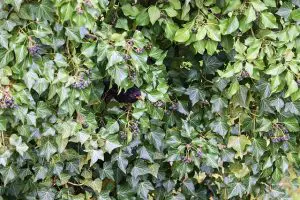
As ivy grows, it forms a thick mass of intertwined trunks and branches and this is the perfect environment for nesting. This makes ivy a perfect plant to grow in your garden to attract and keep birds in your garden. It provides food both berry and insect based, and shelter.
Honeysuckle For Shelter
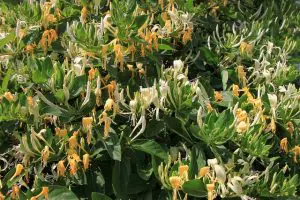
This fast growing, climbing plant grows thick stalks and branches that provide ample shelter for birds. Food, shelter and nesting all in one plant.
Holly As A Shelter Plant
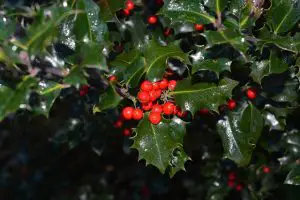
Due to it’s prickly leaves and tight branch growth holly is ideal for providing shelter for birds.
Pyracantha As A Shelter Plant
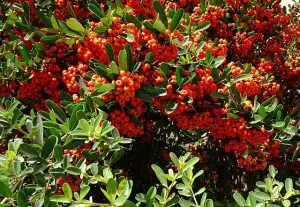
If you’ve ever tried to remove a pyracantha branch, you’ll know just how prickly they are. This is exactly why many small birds choose pyracantha to build their nests in. The thorns keep most predators away and you’ll never see a cat climbing a firethorn bush.
Berberis For Shelter
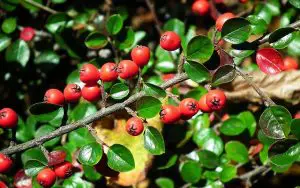
The berberis genus is much maligned by many gardeners which is a shame. It provides food for birds in the form of insects and then later on berries, and is also a great nesting plant for birds. Due to it’s prickly, dense branches, berberis offers a predator proof site for nesting.
Diversify To Attract More Bird Types
The greater variety of plants you grow the more wildlife you will attract. Sometimes it’s wildflowers that attract the most insects, and subsequently the most birds. Or maybe it’s a hedgerow or a single specimen tree.
Allowing wildflowers to set seed is another great way to attract birds to your garden, but be sure to provide shelter near by so the birds can escape any predators.
The list of plants that can and will attract birds is endless, and all are worth trying. Those above are known to attract the most birds in the UK but it’s dependent on area, environment, temperature, etc…
Keep Cats Away
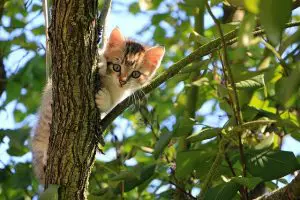
On the subject of predators, cats are the biggest problem for birds in gardens. There are electronic deterents available that should keep cats away. Never feed birds anywhere near low growing plants where cats could hide and ambush the birds.
Birds Need Water
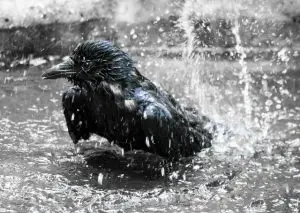
Many people feed the birds, but how many provide clean, fresh water for the birds? Birds need water to drink as we all do but more importantly, they need to groom their feathers. If they don’t clean their feathers regularly they won’t be able to fly properly.
You can buy birdbaths relatively cheaply or you can us any watertight container as long as it’s not too deep. Remember to wash the birdbath out regularly, and to refill whenever the water level drops. This can be upto four times daily in hot, dry periods.
Don’t assume birdbaths are only necessary in Summertime, I would say they’re even more important during Winter. Especially if it’s really cold and everything is frozen, that’s when birds will need to find a source of drinking water. Check your birdbath and remove ice and replace with fresh water as and when necessary.
Where To Position Bird Feeders
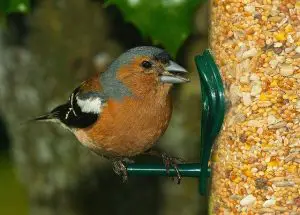
Birdfeeders should be placed around 6 foot (2 metres) away from any type of cover. Remember cats are proficient in sneaking up on their prey. Provide plants that birds can hide in nearby but not so close that cats can use them.
Keep feeders away from fences or over hanging branches where cats can access and ambush the birds. Any posts used to attach feeders to should be smooth and straight to prevent cats from climbing.
Feed Birds Regularly
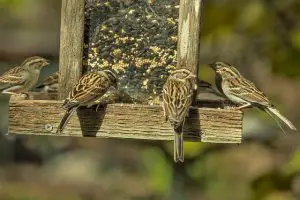
Once you’ve started to feed the birds, they become dependent on you to continue feeding them. I see two generations of birds feeding in my garden, and it’s a real pleasure to see the parents showing the young how to feed etc… The Winter is a particularly important time to maintain your bird feeding habits as they need more food in the cold Winter months.
You may need to increase the amount of food you put out in the Winter, as it takes a lot of the birds energy to survive in the colder temperatures. Plus there is not so much natural food available during Winter and you could easily see your bird feeder used by double the amount of birds as usual.
Old Bird Food
Remove all old bird food if it’s not been eaten, as it can go off and cause diseases and illness in birds. Clean feeders regularly and always before refilling with food. If the food is not going as quickly as you anticipated, don’t put so much in, keep it in an airtight container.
Hygiene Is King
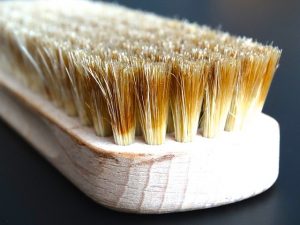
Where there are lots of birds, there can be lots of disease and parasites, to prevent the birds from falling ill you need to keep all birdbaths/feeders/ nesting boxes clean. There are proprietory cleaners on the market for cleaning bird feeders, nesting boxes, and baths but I find the following works really well.
How To Clean Birdbaths and Feeders
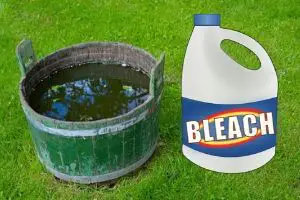
Mix a solution of one part bleach to nine parts water and wash all birdbaths and feeders with this solution. Take feeders apart and get into every nook and cranny. Rinse well in clean water before refilling.
Birds You Might See In A UK Garden
Below are some of the birds it’s possible to get visting your garden (depending on area etc…)This list is not all inclusive, just some of the more common UK birds. Along with some facts about feeding etc…
Robins
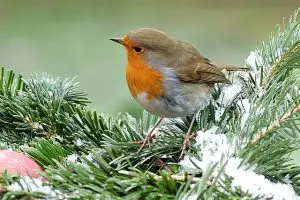
A welcome sight in any garden, the robin will follow gardeners around the garden, waiting to consume whatever we unearth for them. Robins eat fruit, raisins, cheese, sunflower and other seeds, suet, but they prefer mealworms.
Starlings
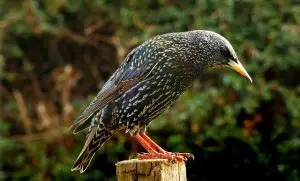
I always imagine starlings to be like the gangs from West side story, they rush in, in large groups eat all the food. While bullying the other birds out of the way, and then once the foods gone so are they.
Starlings prefer eating grubs and mealworms from the ground, to attract starlings don’t use pesticides as they eat many forms of insect life including caterpillars, centipedes, spiders, moths and worms. Starlings also eat small mammals, fruit, and plants.
Thrushes
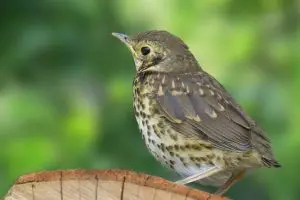
All thrushes prefer worms, insects, slugs and snails and fruit.In Winter when food is less available use windfalls or cut up apples, pears etc… To attract thrushes Place the fruit on the ground.
House Sparrows
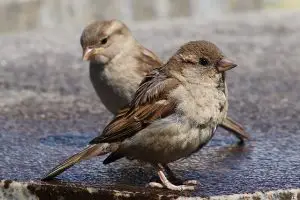
The common house sparrow is sadly not so common anymore. They like to eat sunflower and other flower seeds plus insects and household scraps.
Greenfinches
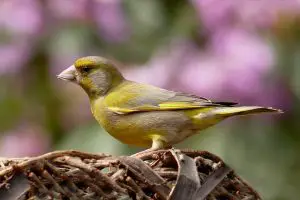
The Greenfinch eats flower buds, seeds, and berries and they will visit birdtables for seeds. They will also use hanging feeders filled with either peanuts or sunflower seeds.
Blue Tits
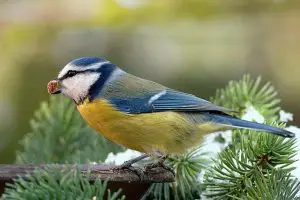
Blue tits eat seeds, peanuts, suet pellets, and suet balls from feeders but they also eat worms, mealworms, caterpillars, and other insects.
Fieldfares

These wild birds eat mainly berries but will also eat windfall fruit so in severe weather cut some apple or pears up and scatter on the ground.
Siskins
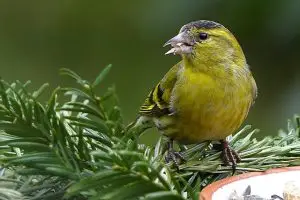
The siskin will eat sunflower seeds and peanuts. But in the wild they usually eat the seeds from conifers, birches and alders. They have been known to eat insects as well.
Waxwings
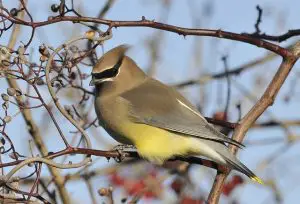
This bird is a Winter visitor to our shores, flying in from Scandinavia. Waxwings eat mainly berries. Usually Rowan and Hawthorn but also Rose and Cotoneaster.
Chaffinches
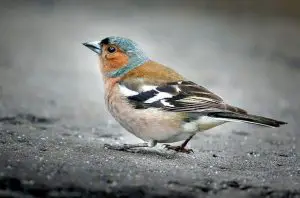
In the wild, Chaffinches diet consists of insects, flies, spiders, caterpillars and other invertibrates. In the garden they will eat seeds, particularly sunflower seeds.
Other Resources
Above is the tip of the iceberg in terms of British garden birds. For much more information follow this link to the RSPB site.
